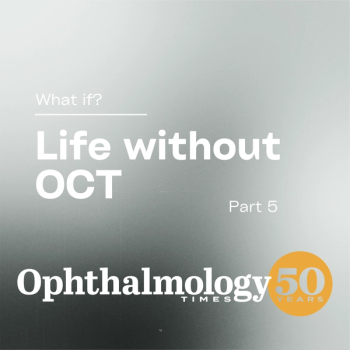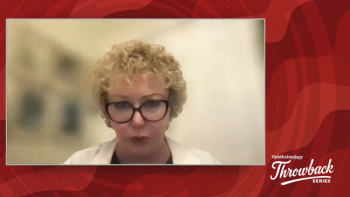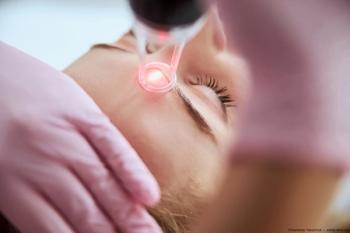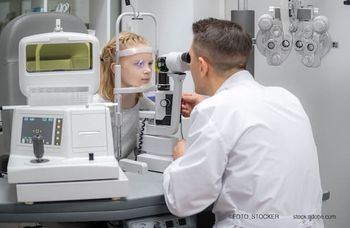
ASCs are a winning proposition for cataract patients, surgeons
Working in an ambulatory surgery center can be a good choice for ophthalmologists, particularly cataract surgeons, because they let them use their time efficiently while delivering excellent care without the hassles of working in a larger hospital setting where ophthalmology may not be a priority.
Take-home message: Working in an ambulatory surgery center can be a good choice for ophthalmologists, particularly cataract surgeons, because they let them use their time efficiently while delivering excellent care without the hassles of working in a larger hospital setting where ophthalmology may not be a priority.
By Michelle Dalton, ELS; Reviewed by Bradley Black, MD
Jeffersonville, IN-Today, about 70 to 80% of all cataract surgeries are performed in an outpatient setting, yet reimbursement for an ambulatory surgery center (ASC) facility remains significantly less than that of the hospital, said Bradley Black, MD, Jeffersonville, Indiana.
“All I can say is that hospitals must have a strong political influence. It would make sense to have a mandate to perform all cataract surgeries in an ASC, which would save healthcare and insurance companies millions of dollars a year,” he said.
Furthermore, ASCs may be more likely to have newer technologies and employees who are dedicated specifically to ophthalmic care, creating a more efficient environment for cataract surgery, he added.
For many ophthalmologists, however, a primary reason they may not work in or own an ASC is because of restrictions such as a Certificate of Need that, in many states, prevents new healthcare facilities from being built. Surgeons who work in an ASC also must have privileges at a local hospital, which sometimes can be difficult to obtain if the surgeon is going to operate in what the hospital considers a “competing facility,” Dr. Black said.
“Though I have worked comfortably in several outlying hospitals using mobile surgical services, there are many drawbacks to working in the hospital setting,” he said.
Among them: the hospital setting is simply not as controlled or favorable for an ophthalmic surgeon. It is very possible that cases may be delayed or moved to a different room where there is an increased risk of contamination. Turnover and patient flow are inherently more difficult in the overwhelming majority of hospital settings, Dr. Black added. Finally, the ability to obtain newer technologies is often times thwarted â sometimes because the hospital will prioritize the purchase of equipment for surgeons who may produce more revenue for a hospital (such as orthopedics).
“Convincing the hospital administration that spending thousands of dollars on new equipment that cannot be directly reimbursed or billed to Medicare/insurance companies can be very difficult,” Dr. Black said.
Conversely however, the burden falls squarely on the shoulders of ASC owners to continually reinvest and provide their patients with the latest technology, even in the face of escalating overhead and declining reimbursements.
Working in an ASC
ASCs are definitely a “win, win, win” for patients, for healthcare, and for surgeons, Dr. Black said. For patients, the convenience “accounts for so much. Typically ASCs allow for easier, more flexible scheduling, less risk of delays or rescheduling, more of a ‘personal touch,’ closer parking and access to the facility, and the confidence that everyone working there is very familiar with their specific needs and concerns regarding eye surgery,” he said.
From a financial perspective, it’s a “win” for healthcare in general, he added.
“ASCs allow for not only more efficient use of those precious healthcare dollars, but more efficient use of hospital resources that, therefore, allows hospitals to focus on those conditions and situations that require more intensive care and monitoring,” he said.
Dr. Black pointed to some research from a few years ago that demonstrated “a significant savings, nearly $15 billion over 5-6 years, to both healthcare and patients (in terms of deductibles and co-pays) if all procedures capable of being done in an ASC had been migrated from the hospital and were reimbursed at the ASC facility rate,” he said. Some ophthalmic surgeons no doubt recall a time when they were relegated to the least desirable, most inconvenient times of the day and then likely forced to wait an inordinate amount of time between cases because eye surgery was not considered profitable for the hospital, he said.
For the surgeon, ASCs represent a “win” situation to work in an ASC setting.
Beyond the efficiencies that benefit the surgeon (patient flow control, employee selection/training, equipment purchasing, care of instrumentation, scheduling), an efficient ASC “can save a moderately busy surgeon hours and hours each week, freeing them up for more time in the office or elsewhere. Time is our most valuable commodity,” Dr. Black said.
Ideal situations
Working in an ASC can save surgeons a tremendous amount of time, but “ideally they would have an opportunity to be involved in ownership as well. There are obvious financial benefits to ownership, but also having a ‘stake in the game’ makes one more accountable or more aware and cognizant of costs and expenditures,” Dr. Black said.
He offered several suggestions for how people who own (or partially own) an ASC can be successful.
“Benchmarking is absolutely invaluable. Comparing yourself with other ASCs can improve efficiencies as well as improve profitability. I also highly recommend the use of consultants who bring in expertise in terms of billing practices, certification, and even OR efficiency. I also would urge all owners to continually reinvest in the new technologies afforded us,” he said.
Owners also can consider bringing in other surgeons as well as other services, such as retina or oculoplastics, he added.
Finally, he encouraged all ASC owners to support the Outpatient Ophthalmic Surgical Society (OOSS).
“It is the one organization that is dedicated solely to protecting patients’ rights and representing surgeons’ interests in Washington, DC,” said Dr. Black, a previous president of the organization.
Regulatory pressures
Continually increasing overhead costs and the ongoing increase in inflation are creating challenges for ASCs, especially in the face of declining reimbursements, Dr. Black said. More daunting, however, is an issue the Centers for Medicare & Medicaid Services is considering: to allow cataract surgery in an office setting.
“Not an ASC, but in a non-sterile office setting, just like we remove styes or a skin tag,” Dr. Black said. From CMS’ perspective, office-based procedures do not incur a facility fee, potentially saving the agency millions.
“It seems to me that CMS is almost waiving patient safety (and increasing the risk of infection) to save some money,” he said.
The OOSS has taken a “strong and unequivocal position on the matter,” according to a letter to CMS. The group contends “cataract surgery should be performed only in a facility, such as an ASC or hospital, that meets rigorous and well-established patient health and safety standards.”
The group strongly recommended CMS shelve the idea until the agency further considers patient health and safety risks, develops standards of care for office surgical suites, identifies a model for the appropriate regulation of office-based surgical facilities, and implements a pilot project in a limited geographic area to evaluate quality of care, patient health and safety, and payment issues.
Bradley Black, MD
Newsletter
Don’t miss out—get Ophthalmology Times updates on the latest clinical advancements and expert interviews, straight to your inbox.



















































.png)


